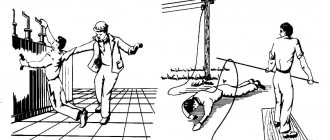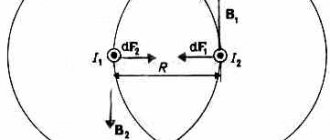- In what cases is it necessary to call a doctor?
- Possible complications after electrical injury
What to do if a child gets an electric shock? What consequences might arise? What to do to avoid or minimize them? Read the article on how to secure your home.
The main causes of electrical injuries in children
Every day, children are admitted to emergency rooms and hospitals after receiving an electric shock. Sometimes they get off with a slight fright, but in some cases, sad consequences are possible. To create a safe space for a child and behave correctly if an electric shock cannot be avoided, it is first necessary to understand the reasons why children are injured. By understanding why boys and girls receive electric shocks, it is easier to eliminate the potential danger.
Among the most common causes of electric shock in children, there are 6 main ones:
- Curiosity. Little explorers do not always take adults at their word, so they do not perceive warnings about danger. The desire to understand the world around us requires sticking our fingers into unexplored holes, checking whether a toy will fit into an outlet, finding out what the wire or plug of an electrical appliance tastes like, studying how a switched-on microwave or TV works inside. These and many other questions that appear in a child’s head encourage them to unknowingly expose themselves to danger. Most often, children from 6 months to 10 years old suffer from electrical injuries, when the desire to understand the world around them is at its peak;
- Adult inattention . This cause of injury is closely related to children’s curiosity, but it implies situations where parents do not have enough experience to prevent the child’s behavior and protect his play space. Sometimes electrical injuries are caused by the absent-mindedness of an adult, the deceptive feeling that the baby has understood the instructions and will not want to touch dangerous things;
- The presence of technically faulty equipment in the child’s access area or the operation of electrical appliances in violation of the rules . Quite often, when buying an electrical device, adults do not read the included safety instructions, being confident that they already know everything. The result can be improper installation or use, turning a convenient item into a potentially dangerous device. As a result, when reaching an unsafe object, the child gets injured;
- Negligence of services involved in the maintenance and repair of electrical systems and equipment . Open electrical panels, exposed wires, old wiring and many other potentially dangerous defects can cause electrical injuries. It is within the power of parents to pay attention to such situations, promptly point out shortcomings to specialists, and teach the child safety rules;
- Children do not have a clear understanding of the dangers of electric current . Of course, it is difficult to fully explain to a child under 5-6 years old the dangers of electricity, but it must be done. Using the cognitive techniques available to him (we’ll look at it in more detail below), talk about the possible consequences. Important! It is necessary not only to tell your child about the dangers of electric current, but also to protect his playing space as much as possible (read how to do this below);
- Incorrect behavior during adverse weather conditions (thunderstorms). Unfortunately, even adults do not always remember how to behave during a thunderstorm, how to avoid being struck by lightning. As a result, children faced with this phenomenon may do the wrong thing. To minimize this reason, remember yourself and tell your children how to properly hide from a thunderstorm (read how to do this below).
What to do if a child gets an electric shock
Unfortunately, even with great effort, it is not always possible to avoid electric shock. In such a situation, you need to clearly know how to identify an electric shock and what measures to take to save the child and minimize possible consequences.
What determines the severity of damage caused by electric current?
Symptoms from electric shock can vary, depending on a combination of several factors:
- current strength and voltage. These indicators vary in different electrical devices and systems;
- type of current: direct or alternating;
- exposure time;
- environmental humidity;
- state of the body;
- the path of current through the body. In common practice, the path of current through the body is called a loop (from the point of entry of the electric current to the point of exit). There are several types of current paths: bottom loop: the current entered one leg and exited through the other - the safest option;
- upper loop: the current entered one hand and came out of the other, entered the hand and came out through the leg, entered the hand and came out through the head. This option carries great danger, because... current passes through the heart;
- full loop - electric current passed through the entire body. The most dangerous type of electric shock.
These factors together can cause varying amounts of damage, depending on the values and environmental conditions.
Even a small voltage in conditions of high humidity, with prolonged exposure and passing through the heart area, can lead to serious consequences. You can guess what the current loop was like by finding the entry and exit points of the electric current: a characteristic burn will be present in these places.
How to understand that a child has received an electric shock
Signs of electrical injury can be divided into 3 main groups according to the degree of damage to the body. The number of signs and the intensity of their manifestation depend on how strong the impact was.
Signs of mild electric shock
- Paleness of the skin;
- Frightened appearance, crying;
- Rapid breathing;
- Stiffness of movements;
- Muscle tension;
- Dizziness;
- Visual impairment;
- Reduced attention;
- Feeling overwhelmed;
- Excitement or euphoria. This symptom is rare, but clearly indicates a mild electric shock.
Note! All of the above symptoms, or only some of them, may appear. A child over 3 years old should be asked what happened. To understand whether a child under 3 years old has received an electric shock, it is necessary to assess the surrounding situation (is there a switched-on electrical appliance nearby, is there a smell of burning, electricity, etc.);
Signs of moderate electric shock
- Loss of consciousness for a short period of time;
- The child is delirious;
- Severe anxiety;
- Convulsions;
- Vomit;
- Stopping breathing for a few seconds.
The average degree of electric shock is expressed by more severe symptoms. It is important to take immediate action and take him to a medical facility to prevent complications from what happened.
Signs of severe electrical shock
- complete immobilization of the body;
- complete lack of sensitivity;
- lack of pulse in the arm or carotid artery;
- lack of breathing;
- the entry/exit points of the electric current are clearly visible.
A severe degree of electric shock can be manifested by one of these signs or all of the above. EMERGENCY HOSPITALIZATION required.
How to Assess Your Environment to Confirm an Electric Shock
- The child lies on or near an electrical appliance. In case of a mild degree, the device lies not far from the son or daughter, the baby looks at it with fear;
- There is a smell of burnt skin or hair in the room, a characteristic smell from an electrical short circuit.
Causes of electrical injuries
Electric shock is one of the most dangerous types of injuries. If the device has high voltage and prolonged contact with the source, it can be fatal. Injury can occur due to various reasons. The most common of these is contact with a bare wire. This can happen to anyone, especially people who work with electricity. A bare wire is a particularly dangerous source of current. Most often, electricians come into contact with it when repairing meters, sockets, etc. In addition, you can get electrical injury from ordinary appliances that are used every day: hair dryer, kettle, mobile phone charger, microwave oven. Normally, all household appliances are not dangerous, since the wires have a protective layer. If it breaks, its integrity is compromised. This may result in exposed wires. Therefore, broken appliances must be removed and kept away from children! After all, despite the small dose of electricity, they can be dangerous to the child’s health. Another source of current is sockets.
You can get an electrical injury not only indoors, but also outdoors. Lightning is a natural source of current. When exposed to the human body, it can lead not only to burns, but also cause death.
Sequence of actions if a child is electrocuted:
- Do not panic;
- We quickly assess the situation: whether the child is under the influence of current or not.
- If not, go to point 3.
- If yes: Approach the child in small steps without lifting your feet (shuffling);
- If exposure to current continues, turn off the power to the device.
- If this cannot be done, remove the object that conducts current to the child with a wooden or non-metal dry object.
- If this is not possible, pull your son or daughter out by the clothes without touching his body (use this option as a last resort!!!)
- Call an ambulance. It is advisable to have someone do this while you conduct the inspection.
- Inspection for injuries:
- Checking breathing and pulse: Place 2 fingers on the carotid artery and check the pulse;
- We lean over the child's mouth, observing the movements of his chest. You can apply a mirror if, due to excitement, you cannot determine the presence of breathing (if there is breathing, it will fog up).
- If the pulse and breathing are normal, we continue to monitor them while waiting for the ambulance to arrive. We place the child comfortably on a flat, hard surface. We unbutton our clothes to provide fresh air. You can wet your face with water or let ammonia on a cotton swab smell it;
- If there is no pulse and/or breathing, go to step 5.
- Resuscitation actions in the absence of pulse and/or breathing.
- The child has a pulse, but is not breathing - we perform artificial respiration: Children under 1 year: We bend over the child and cover his nose and mouth with our mouth, making 2 short exhalations into the child’s mouth. Note! The lung capacity of children is less than that of adults! Inhale approximately a third of the volume of air;
- Baby from 1 to 3 years old. We exhale 2 times into the mouth, while closing his nose. Control the volume of inhaled air, its volume should be no more than ½ of a normal exhalation;
- Child from 3 to 8 years old. We exhale 1 time every 2 seconds. The child's nose should be covered;
- Over 8 years old - Exhale once into the mouth, covering the child’s nose, every 4 seconds.
- The child has no pulse and no breathing - perform cardiopulmonary resuscitation:
- For babies up to 1 year old: place the tips of the index and middle fingers in the middle of the chest, between the nipples. We inhale, capturing the child's nose and mouth. Pressure on the sternum, depth no more than 1 cm. Alternate 1 exhalation into the mouth and nose, 5 pressures;
- Child from 1 to 8 years old. Place your palm on the middle of your chest. Exhale once into the child's mouth. We press on the chest with the palm of our hand 5 times, the depth of pressure is up to 1.5 cm. We alternate 1 exhalation, 5 pressures;
- Children over 8 years old. There are 2 outstretched arms on the chest, one on top of the other. We exhale 2 times into the mouth, press 15 times on the sternum, the depth of pressure is 1.5-2 cm.
Resuscitation measures are carried out until breathing and pulse are restored or until emergency medical services arrive!
In what cases is it necessary to call a doctor?
Calling an ambulance or going to the hospital is a mandatory procedure after receiving an electric shock. The consequences do not always appear immediately; in some cases, it may take time. To avoid complications, even with a mild electrical injury, you must seek medical help. Among the important procedures you need to do:
- general blood analysis;
- general urine analysis;
- electrocardiogram (ECG).
After an electric shock, a child must be seen by a doctor.
Consequences of electric shock
In case of electric shock, it is impossible to visually assess the severity . In domestic conditions, electrical injuries rarely lead to death, but the symptoms of the injury will remind a person of what happened for a long time.
- Burns of varying severity . They occur not only at the site of the lesion. The discharge can cause clothing and hair to ignite and cause a fire at the scene. There are 4 degrees of burns: from redness of the skin to necrosis of all layers of skin and bone tissue. The outcomes can be either favorable - complete restoration of the integrity of the skin, or extensive scarring.
- Typical for electrical injuries are marks or patterns of various shapes and colors, painless, often pale yellow oval spots with a clear outer contour. They begin at the point of contact with the current source due to thermal and electrochemical effects. No two marks are the same. No specific treatment is required. They go away on their own.
- Electrometallization of a skin area . This is the impregnation of skin cells with small pieces of metal in the event of its evaporation or splashing under the influence of current. In this case, the skin becomes rough and turns the color of the metal that has penetrated the skin.
- Damage and disruption of the nervous system at different levels: convulsions, dizziness, numbness of the extremities (usually those affected by electric current), tremors, chronic pain, coordination problems, stroke, cerebral hemorrhages, etc.
- Loss of consciousness . In case of domestic injuries, it is usually short-term.
- Disturbances in the functioning of the heart : the pulse is difficult to palpate, heart murmurs appear, tachycardia, etc. When a discharge directly passes through the heart, fibrillation, a heart attack can develop, and if help is not provided, it can be fatal.
- Vascular changes : spasm, destruction of vessel walls with the formation of hemorrhages, thrombus formation. This causes disruption of the internal organs.
- Spasm of the respiratory muscles, laryngospasm . This causes aphonia, so people often cannot call for help. In severe cases, pulmonary edema and breathing problems develop.
- There is a high risk of deterioration or loss of vision when the discharge passes through the victim’s head. During the first year after an electric shock, there is a high probability of developing cataracts. Fortunately, this rarely happens with household injuries and voltages less than 220 volts.
- Psychological problems : anxiety, fear of a second blow, insomnia, panic attacks, depression.
- Damage to sensory organs : middle ear injury, tinnitus, ruptured eardrum, vestibular system disorder, hearing loss.
- Exacerbation of chronic diseases . For example, stomach and duodenal ulcers.
- Kidney or liver failure develops due to the destruction (necrosis) of small blood vessels.
- Mechanical injuries of varying severity.
- Coma.
- Death.
Long-term consequences include:
- Changes in the musculoskeletal system: bone deformations, damage to the ligaments, up to contractures (restricted joint mobility)
- Persistent visual and hearing impairment.
- Autonomic changes in the nervous system, inflammatory changes (neuritis), encephalopathy, trophic ulcers.
- From the heart: persistent cardiac arrhythmias, obliterating endarteritis
What are the degrees of electric shock?
In medical practice, it is customary to divide electrical injuries into 4 degrees:
1st degree. The child is conscious, convulsive muscle contractions and pale skin are observed;
2nd degree. There is convulsive muscle contraction. Loss of consciousness is possible for no more than 20 seconds. Blood pressure is reduced, but the heart and breathing are normal;
3rd degree. There are convulsions and there is no consciousness. Cardiac activity is impaired: there may be arrhythmia, surges in blood pressure, etc. Impaired respiratory function, decreased oxygen supply to organs. Possible coma.
4th degree. Clinical death up to 10 minutes. Ventricular fibrillation of the heart.
Possible complications after electric shock
Depending on the impact: the strength and duration of the impact, the path of the current, the humidity of the environment, etc., the consequences can be varied. At best, the child will receive a serious lesson about the need to follow safety rules.
If the impact on the body was significant, then severe complications may occur. Most often after serious electric shocks occur:
- tachycardia - pathological increase in heart rate;
- arrhythmia - disturbance of heart rhythm;
- arterial hypotension - decreased blood pressure;
- fibrillation of the ventricles of the heart - disruption of its functioning, leading to cessation of blood supply;
- laryngospasm, respiratory failure, asphyxia;
- injuries or ruptures of tendons, avulsion fractures, if there are convulsions during an electric shock;
- liver or kidney failure;
- disruption of the medulla oblongata;
- internal bleeding;
- gangrene;
- pneumonia;
- sepsis.
These complications do not necessarily occur in all cases of electrical injuries, but it is recommended to play it safe and be sure to consult a doctor for examination.
How and why do electric shocks occur?
A person can suffer from an electric shock under fundamentally different circumstances. And for this it is not at all necessary to poke your finger into the socket. It is enough to walk along the ground where the short-circuit cable is laid. This can also happen when certain surfaces in the home are overvolted, or when trying to insert a plug into a bad, old outlet. If you have a child, you should carefully monitor his games and instruct him on the subject (if he is of a conscious age) how dangerous some curiosity can be.
- Electric shock comes in different forms. It may be insignificant, or it may turn out to be truly fatal and fatal. It all depends on the duration of exposure to electricity on the body and the voltage threshold that was present in the network at the time of the injury. Most often, people are exposed to electric shocks of 220 volts, since this is the indicator that is present in our household electrical wiring.
- The most minor consequence of a 220-volt electric shock is the appearance of grayish and yellowish spots on the skin. At the same time, the person feels relatively normal and does not show any complaints about his own condition. This usually happens if the impact is short-lived.
- An important phenomenon in the pathogenesis of electrical injury is the path of electric current through the human body. All tissues of the human body vary significantly in the amount of resistance to its movement, and their conductivity is highest in those places where the tissues are filled with moisture. The most resistant to such influences are bones and skin. And soft tissues - muscles, organs, blood - are good conductors, and, therefore, are the most vulnerable in this regard.
- Nerve trunks and endings are also fairly good conductors. But, most interestingly, skin can also be turned into an excellent conductor of electric current. And to do this, just moisturize it. Then a lesion that is insignificant under normal conditions can turn into a real fatal shock for a person.
- The characteristics of the voltage itself should also be taken into account. For example, alternating current is much more dangerous than direct current. This is due not to its qualitative characteristics themselves, but to its ability to provoke muscle spasms, due to which a person in trouble simply cannot free himself from the “deadly” contact.
- Cramps are often accompanied by increased sweating, which naturally moisturizes the skin, making it an excellent conductor for tension, which spreads throughout the body quite quickly. When the current begins to penetrate the body with even greater intensity through the skin, it provokes damage to the respiratory tract and heart. Ultimately, the patient develops a fatal arrhythmia and dies.
- Death rarely occurs from low voltage electric shock. It is caused rather by the direct effect of a relatively weak current on the myocardium. In this case, ventricular fibrillation develops. If we talk about high voltage (1000 volts or more), it provokes sudden death due to the direct effect on the centers of the brain responsible for the activity of the heart and respiratory organs.
- The saddest and most terrible outcome of an electric shock is instant death. However, it is no better when the victim remains conscious and cannot break contact with the source of voltage. Loss of consciousness with serious damage to the vital functions of the human body is also possible.
Doctors say that after an electric shock, an absolutely healthy person can be saved in seven minutes, and a previously ill person can be saved in five minutes or less.
How to keep your child safe from electric shock at home
Understanding how dangerous electrical injuries are, it is necessary to take all possible measures to ensure the safety of children and adults. To create a safe space, it is recommended to follow some tips:
- Periodically assess the home for the presence of unsafe electrical appliances, networks, systems that can cause electric shock;
- All sockets in the house, even those that seem inaccessible to a child, should be covered with special plugs made of plastic or other material with dielectric properties;
- When purchasing and using extension cords, choose models equipped with special curtains or covers that prevent the conduction of current if an object gets into only one hole;
- Check and, if necessary, replace loose switches and sockets;
- When purchasing electrical appliances, give preference to models equipped with a child lock system;
- Do not leave plugged-in appliances unattended;
- Hide all wires, cables and other conductive objects as much as possible. The ideal option is to carry them behind furniture or sew them into special boxes;
- Regularly check the wiring with the help of specialists and carry out timely repair work;
- Carefully read the instructions on the safe use of purchased electrical appliances;
- Do not allow your child to play with electrically powered objects;
- If you detect a potentially dangerous electrical device, an uncovered electrical panel, improperly secured electrical wires or other dangerous defects of employees servicing the electrical network, immediately report the situation to the appropriate organization;
- Teach your child the basics of safety.
Electric shock: first aid
Electric shock is an electrical injury, that is, the state of the body after an electric shock.
Possible death due to cardiac and respiratory arrest. If the victim does not die, he may have complications, depending on the force of the blow and other factors. Complications may affect hearing, vision, central nervous system, heart and blood vessels, as well as other body systems. When can such a disaster happen?
- when a person does not know the safety rules for using electrical appliances
- when a person neglects safety rules
- when the device at work or at home is faulty
— when the wires of high-voltage lines are broken
How to teach your child safety basics
Teaching children how to handle appliances and electrical systems carefully is one of the main ways to prevent electrical injuries. It is necessary for a son or daughter to begin acquaintance with danger from early childhood, starting with understandable prohibitions, gradually expanding their understanding of the essence of the restrictions.
Children's thinking is different from that of an adult, so it is necessary to approach the issue of teaching a child in a playful way. Among the most suitable options you can use:
- game. Invite your child to play with toys or dolls, and in the process show what happens if a naughty car or animal plays with an outlet or electrical appliance. Be sure to show your own fear and the seriousness of the situation;
- cartoons. Children easily learn the lessons taught by cartoon characters. Suggest watching “Auntie Owl’s Caution Lessons”, “Fixie Tips. Caution, electricity”, “Why”;
- books. You can purchase a specially designed book on teaching children the basics of safety by age;
- discussion. After reading a book or watching a cartoon, discuss what you saw and heard;
- developing a clear understanding of the word “no”. You should carefully monitor the frequency of use of this word. Adults need to remember that a child reacts to a ban only 5 times a day, after which the word “no” is not perceived. For the ban to work, you need to use it only in truly dangerous situations.
If a child attends a preschool institution, then safety lessons will be taught as part of the general educational process. But in order for what you learned in kindergarten to be remembered well, it is necessary to support your knowledge with home schooling.
By securing your own home and teaching your child to follow safety rules, parents can avoid most situations where there is a risk of electrical injury. But in addition to the general rules, it is worth telling your child and reminding yourself how to behave during a thunderstorm so that the natural phenomenon does not threaten life.
Tell your child how to behave in a thunderstorm
How to behave in a thunderstorm
Rules of conduct if a thunderstorm finds you at home:
- disconnect all electrical appliances from the network, except the refrigerator;
- check that windows and balcony doors are closed;
- do not go near windows;
- do not use a mobile phone unless absolutely necessary;
- If possible, delay leaving the house until the storm is over.
Rules of conduct if a thunderstorm catches you on the road:
- when traveling by car, it is advisable to park away from trees and power lines;
- turn off the engine, close the windows, turn off the radio and remove the antenna;
- when driving a two-wheeled vehicle, you must stop and move 40 meters away from it;
- when in open areas, in the city, you can continue to move slowly to the nearest shelter.
Rules of conduct if there is a body of water nearby:
- get out of the water and move away from it;
- When boating or catamaran, return to the shore as quickly as possible and move away from the water.
Rules of conduct during a thunderstorm in the open:
- the best solution is to get to the nearest building and wait there;
- if there are no buildings nearby, you must: turn off all electrical devices located nearby: computer, phone, tablet, player, navigator, etc.;
- remove jewelry and put it in a backpack or bag;
- check if there are bushes, trees, or power lines nearby;
- find a depression or ravine. It is desirable that the soil in it be dry and sandy;
- squat down and lower your head between your knees, clasping it with your hands;
- try not to move;
- do not lie down on the ground;
- do not hide under lonely trees, metal structures, or damp walls.
Rules of behavior during a thunderstorm in the forest:
- get out of the forest or find an open area;
- turn off all electrical appliances nearby;
- remove jewelry;
- avoid tall trees;
- avoid trees previously damaged by thunderstorms;
- squat down, lower your head and clasp your hands.
Teach these rules to your children and remind them about safety precautions at home to completely eliminate the possibility of electrical injury.
If you liked the article, please share a link to it











